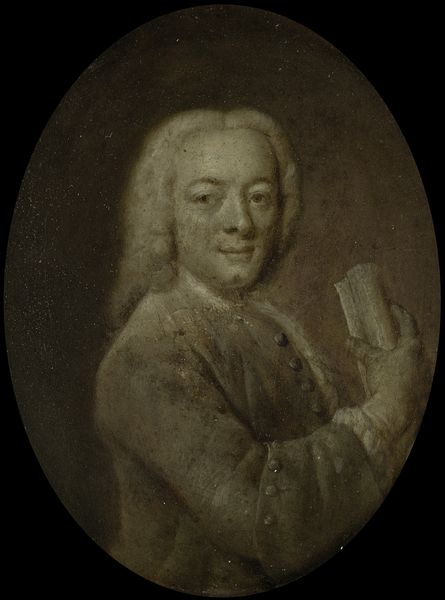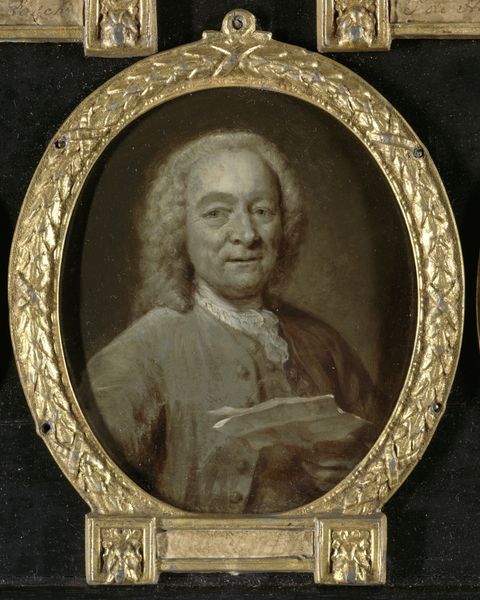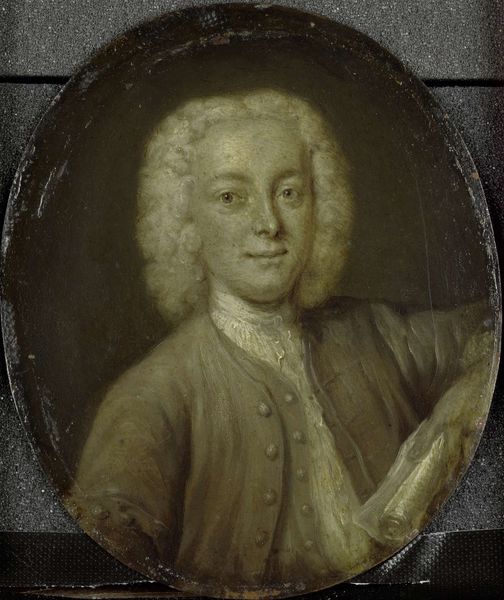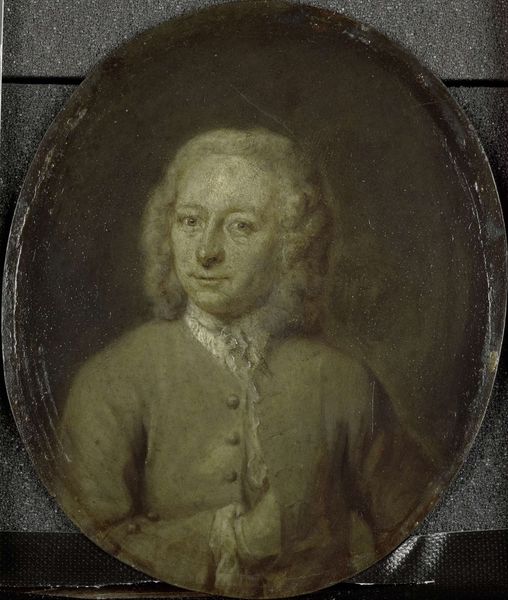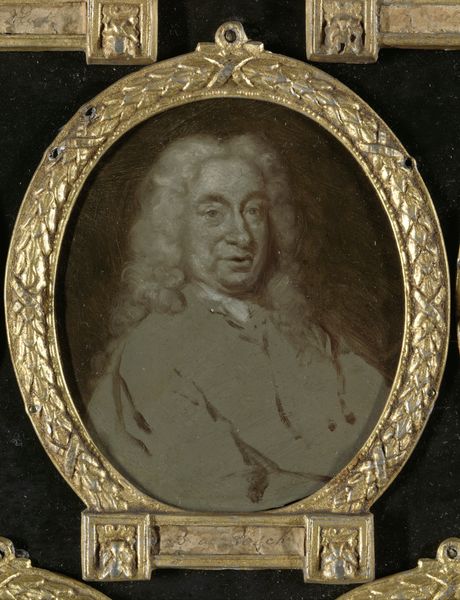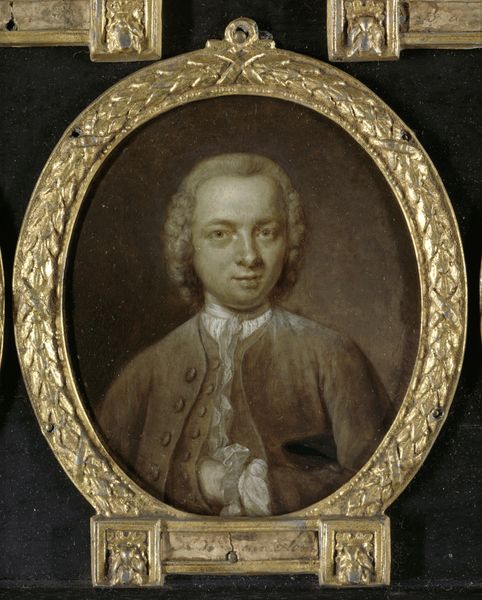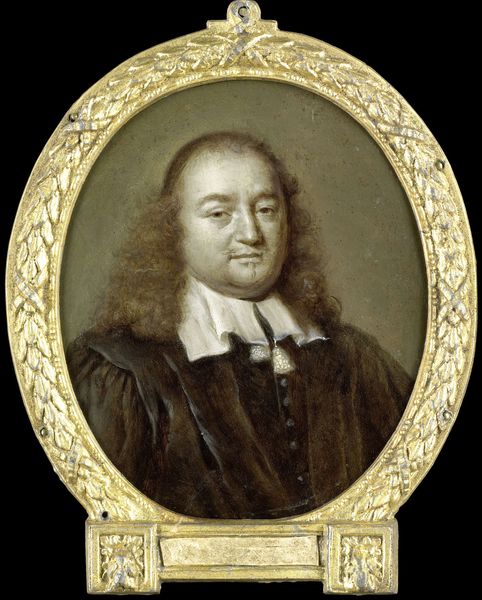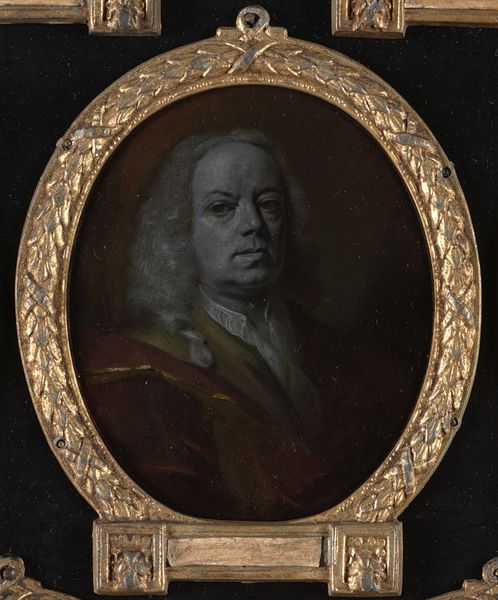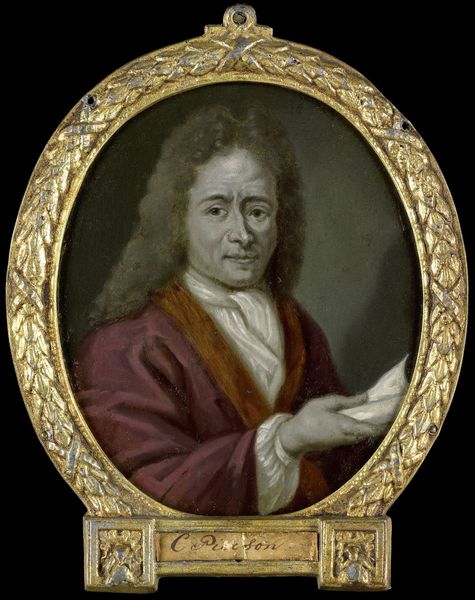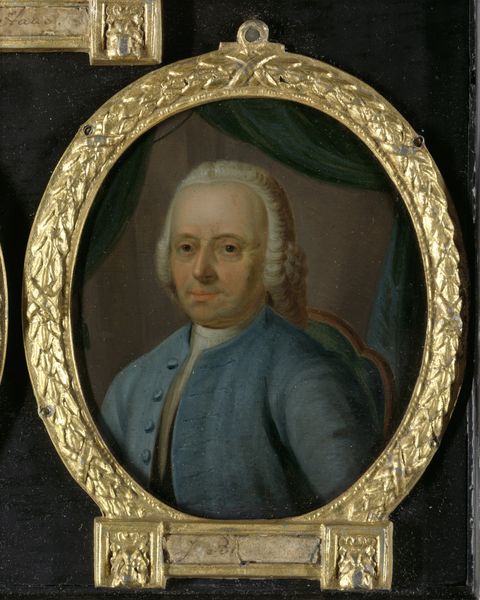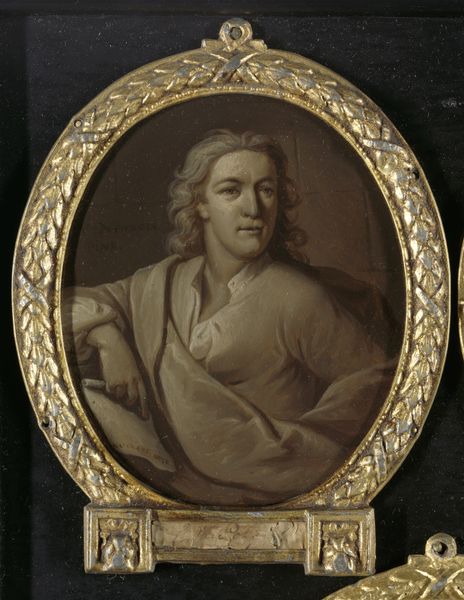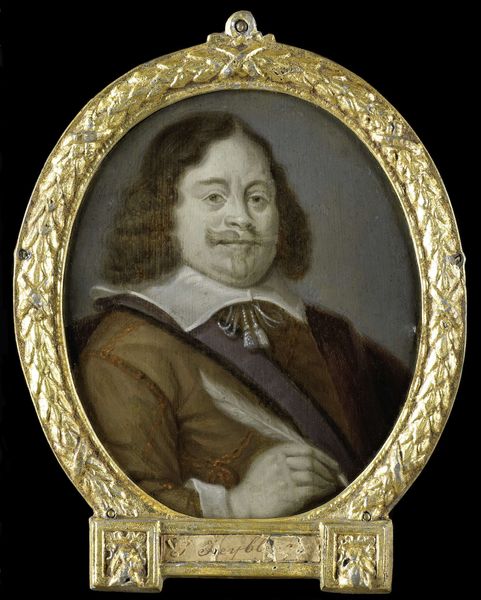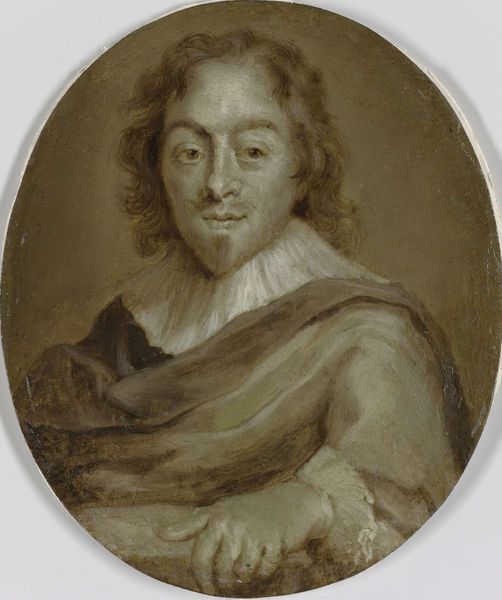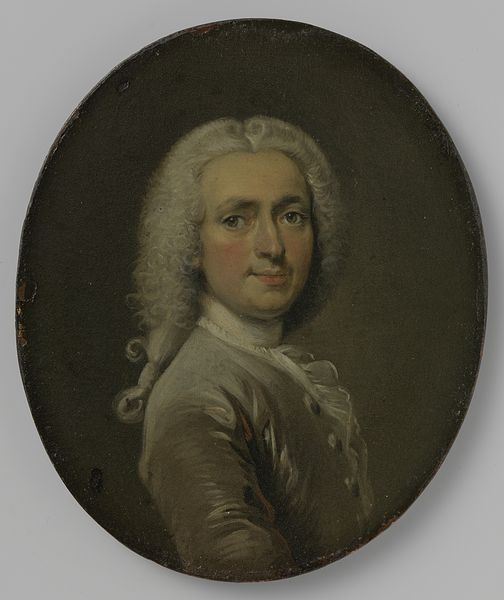
painting, charcoal
#
portrait
#
baroque
#
painting
#
charcoal art
#
oil painting
#
charcoal
#
watercolor
Dimensions: height 11 cm, width 9.5 cm
Copyright: Rijks Museum: Open Domain
Editor: So, this is Jan Maurits Quinkhard's "Portrait of Bernardus de Bosch I, Poet and Art Patron in Amsterdam" from 1743, created with charcoal. The neutral tones give it a very composed, intellectual feel. What catches your eye in this piece? Curator: Immediately, I am struck by the book in his hand. Not just as an object signifying his literacy and leaning, but more as a symbolic representation of knowledge, wisdom, and the passing down of cultural narratives. Think about the historical weight a book carried in 1743, the stories, beliefs, and ideologies bound within those pages. It suggests Bernardus wasn't merely a reader, but a carrier of cultural memory. Editor: That's a side to books I never considered before! Curator: The Baroque period embraced symbolic imagery to reflect societal values. Consider the laurel wreath encircling the portrait. What connotations does laurel evoke? Victory? Excellence? These symbols are purposefully woven into the portrait to create an impression. It creates layers. Who do you think he’s presenting himself to be, and why? Editor: I guess, not just a man but someone associated with those valued qualities. It feels like a carefully constructed image to cement his legacy. Curator: Precisely. Portraits weren’t just likenesses; they were declarations. They echo aspirations. Understanding those unspoken signals opens our understanding. The artist acts as a time capsule! Editor: I see how every element, from the book to the wreath, speaks to something bigger, making the portrait so much more than just an image of a person. Curator: Indeed. By acknowledging such connections and visual cues, art becomes less static and speaks more directly to cultural understanding. Editor: I’ll certainly think differently about portraits from now on!
Comments
No comments
Be the first to comment and join the conversation on the ultimate creative platform.
